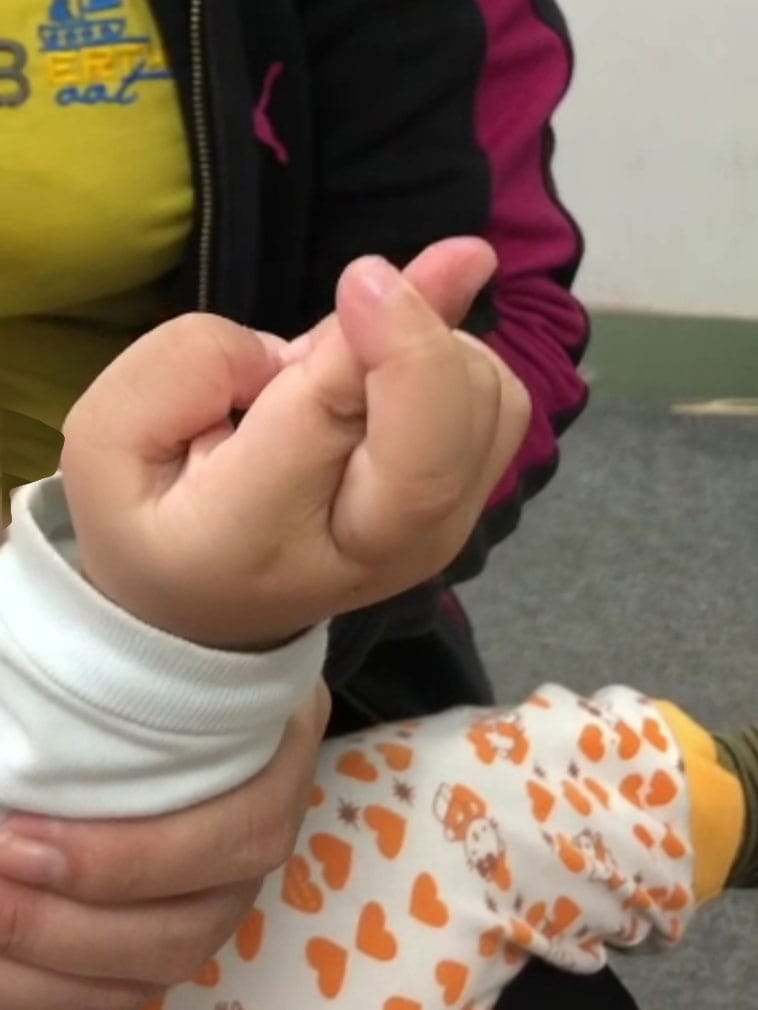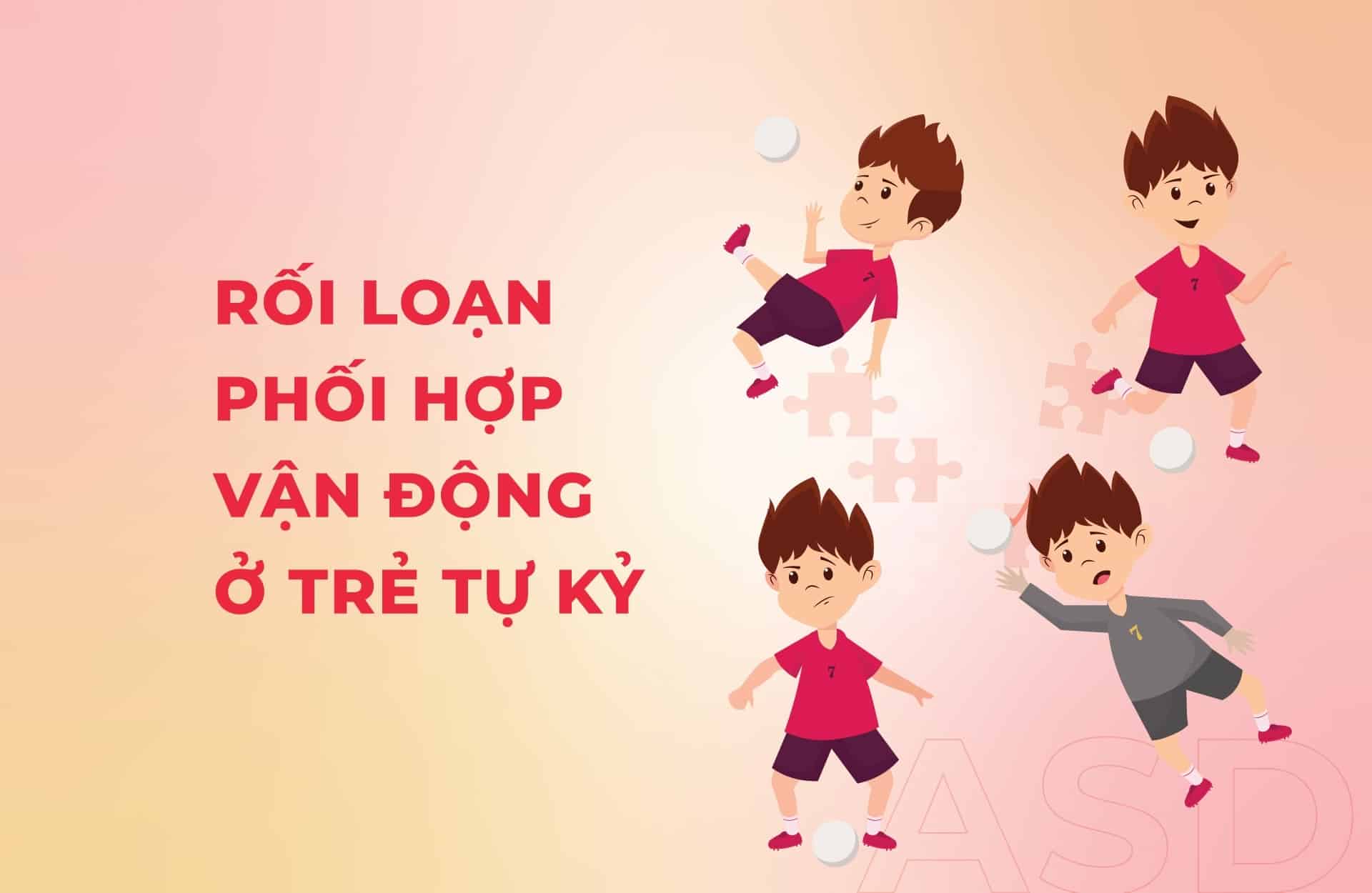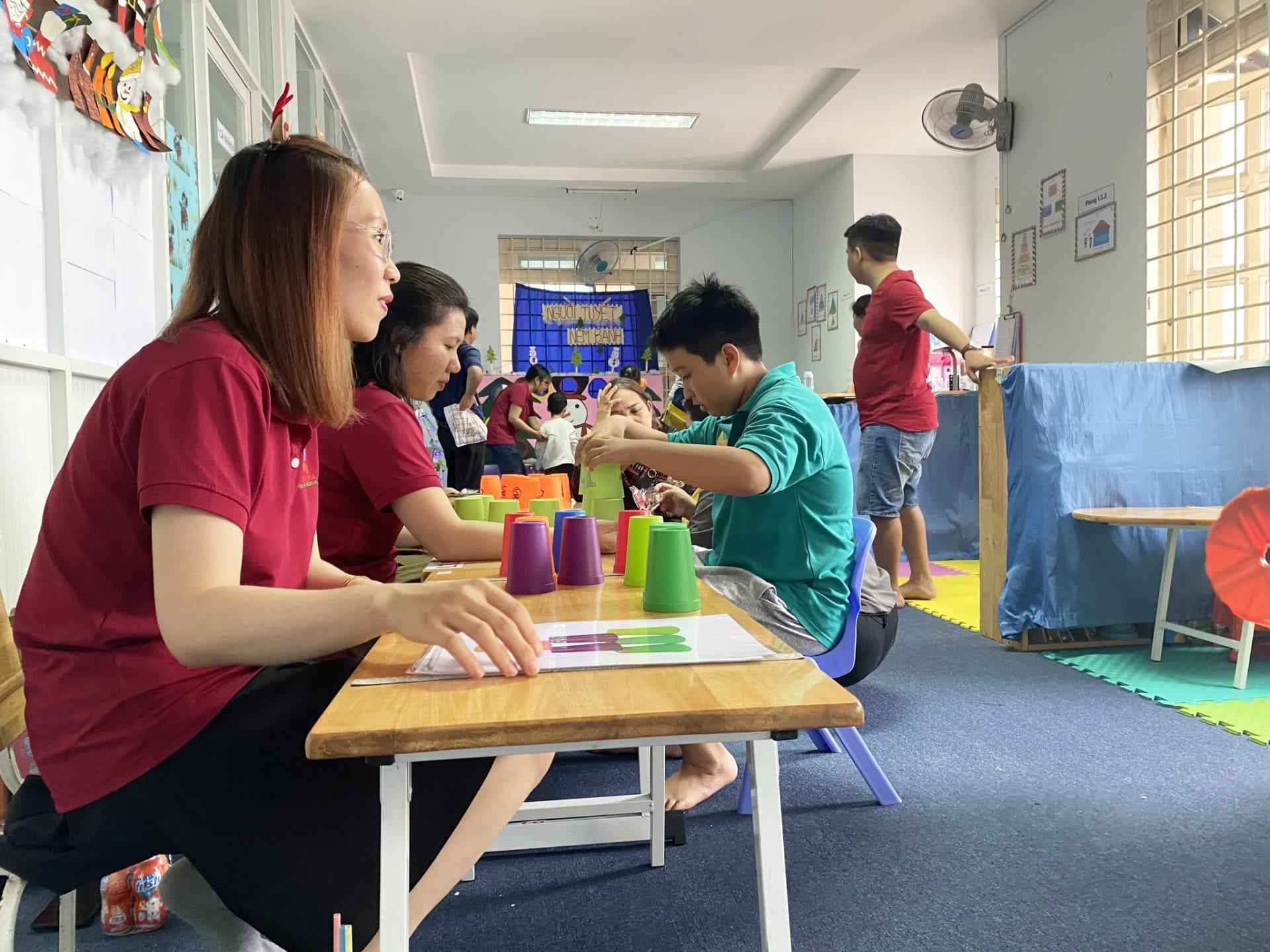In daily life, we receive information from our living environment through a system of sensory organs, including external sensory organs: taste, touch, smell, sight, hearing, and internal sensory organs: vestibular – movement and proprioception. The sensory system is part of the nervous system responsible for gathering information about the senses. The process of receiving sensory information through the senses (sensory stimuli) and organizing, selecting information from the brain’s sensory organs, thereby controlling appropriate actions and behaviors, is called sensory processing.
Children with autism often encounter difficulties with sensory processing due to inefficient information processing systems. They may be startled by a slight noise (hypersensitivity) or may not notice ordinary auditory stimuli from outside (low attention). Information from the senses is processed inaccurately, incompletely, or chaotically, resulting in children responding incorrectly or inappropriately to sensory information. Children may either be indifferent or overly excited about sensory information they receive.
Recognizing the abnormalities in children and the importance of intervention, Sao Mai Center has focused heavily on sensory therapy methods to help children with autism harmonize their senses in receiving and processing information. This helps children maintain focus on learning and playing, minimize unwanted behaviors, and inappropriate responses: screaming, constant running and jumping, selective eating, lack of attention… etc.
It can be said that sensory therapy is considered one of the essential therapies in the intervention process for children with autism, intellectual developmental delay, attention deficit hyperactivity disorder (ADHD), children with many unwanted behaviors, etc. However, for this therapy method to be truly effective, it requires well-trained and experienced therapy staff. Currently, Sao Mai Center has a team of competent therapy professionals who work responsibly, enthusiastically, and love children. In addition, the center has spacious sensory therapy rooms equipped with scientific equipment and supplies, serving well for children’s therapy activities.
At Sao Mai Center, the therapy process for children is closely monitored and coordinated by the center’s leadership and families. Before therapy, therapy teachers work with the parents of autistic children while contacting and assessing to understand the difficulties the children face in processing sensory information. The assessment process is based on sensory disorder assessment forms for children with intellectual disabilities and sensory disorder assessment forms for autistic children. Teachers record their assessments and consider which sensory areas most affect the child’s integration into learning, the frequency and extent of the child’s sensory impairment, and the type of sensory feedback the child perceives, to select intervention strategies for that sensory. At the end of the assessment process, each child will receive their own sensory assessment card related to their ability to receive and respond to sensory information. From there, therapy teachers will plan intervention goals. In each 30-minute therapy session daily, teachers provide individualized programs for each child, including activities and implementation methods to overcome sensory dysfunction. Depending on the sensory needs of the child and the intervention goals for the senses, teachers provide activities for the child to experience more with the senses they are struggling with, helping them learn to manage sensory preferences, have appropriate responses to received sensory information, and develop awareness by developing communication skills and understanding, helping children feel safe, comfortable, confident, reducing inappropriate behaviors.
According to experts, the brain has the ability to change or improve its function (brain plasticity) and that improving brain function can be achieved through therapy focused on regulating sensory stimuli reasonably. And sensory therapy, sensory regulation can help reduce the incidence of self-stimulating behaviors, hyperactive behaviors, disruptive behaviors (self-harm, constant running and jumping, biting others, throwing objects…). Therapy activities can also overcome nerve impairments causing motor and sensory problems often seen in many autistic children.
That assessment is absolutely correct, as evidenced by the extensive activities, Sao Mai Center has provided sensory therapy for hundreds of children with sensory disorders, and most of them have made significant progress. Many parents have been very happy to witness the positive changes in their children.








